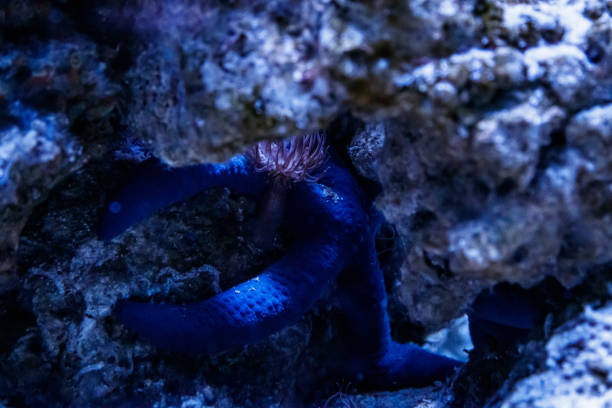Whiskers in the Wild: The Surprising Adaptations of Vibrissae in Marine Mammals
Dive into the fascinating world of marine mammal whiskers, where these seemingly simple hairs play a crucial role in underwater survival and navigation. From seals to sea otters, discover how vibrissae have evolved to become sophisticated sensory organs, enabling these animals to thrive in the depths of the ocean.

Vibrissae: More Than Just Hair
Unlike the whiskers found on terrestrial mammals, marine vibrissae are incredibly complex structures. They are deeply rooted in the skin and connected to a dense network of nerves and blood vessels. This intricate design allows marine mammals to detect even the slightest changes in water pressure and movement. The vibrissae of seals, for example, are so sensitive that they can detect movements as small as 0.004 millimeters, equivalent to about one-fifteenth the width of a human hair.
Seals: Masters of Vibrissal Perception
Seals are perhaps the most well-known marine mammals when it comes to impressive whiskers. Their vibrissae are not only longer and thicker than those of land mammals but also have a unique beaded structure. This beaded texture helps to reduce drag as the seal swims, allowing for more efficient movement through the water. Additionally, the beads create tiny vortexes that amplify water movements, enhancing the seal’s ability to detect prey and navigate in murky waters.
Sea Otters: Whiskered Wonders of the Kelp Forest
Sea otters, with their adorable faces and playful nature, also boast impressive whiskers. These marine mustelids use their vibrissae to locate and identify food in the kelp forests they call home. Their whiskers are particularly sensitive to touch, allowing them to differentiate between various types of shellfish and other prey items hidden among the dense kelp. This tactile ability is crucial for sea otters, as they often hunt in waters with low visibility.
Manatees: Gentle Giants with Sensory Superpowers
Manatees, often referred to as sea cows, possess some of the most unique vibrissae in the marine world. Unlike other marine mammals, manatees have whiskers distributed all over their bodies, not just on their faces. These whiskers, called post-oral whiskers, help manatees sense their environment and locate food. The density of these whiskers is so high that a single manatee can have up to 600 whiskers on its body, making them incredibly sensitive to their surroundings.
The Evolution of Marine Vibrissae
The development of these specialized whiskers is a testament to the power of evolutionary adaptation. Over millions of years, marine mammals have fine-tuned their vibrissae to suit their specific needs in the aquatic environment. This process has resulted in a diverse array of whisker types and functions across different species, each uniquely suited to its habitat and lifestyle.
Implications for Conservation and Research
Understanding the importance of vibrissae in marine mammals has significant implications for conservation efforts and scientific research. As human activities continue to impact marine ecosystems, it’s crucial to consider how changes in water quality, noise pollution, and habitat destruction might affect these animals’ ability to use their whiskers effectively. Research into marine vibrissae also has potential applications in biomimicry, inspiring new technologies for underwater sensing and navigation.
The Future of Whisker Research
As technology advances, scientists are developing new ways to study marine vibrissae in greater detail. From high-speed cameras that capture whisker movements to sophisticated computer models that simulate whisker function, these tools are providing unprecedented insights into the sensory world of marine mammals. This ongoing research promises to reveal even more secrets about these remarkable adaptations and their role in the complex ecosystems of our oceans.
In conclusion, the vibrissae of marine mammals represent a fascinating example of nature’s ingenuity. These highly evolved sensory organs allow their owners to thrive in the challenging underwater environment, showcasing the incredible adaptability of life on our planet. As we continue to explore and understand the mysteries of marine whiskers, we gain not only valuable scientific knowledge but also a deeper appreciation for the wonders of the natural world.





